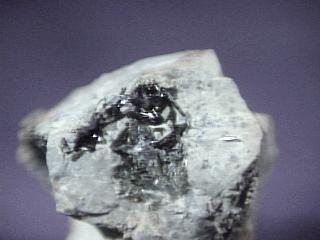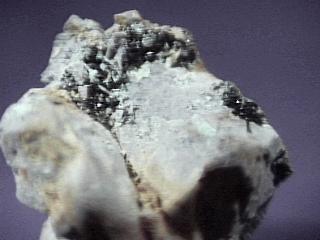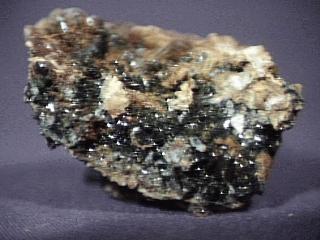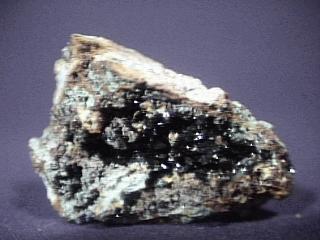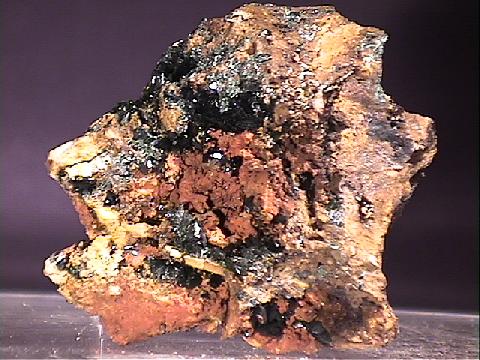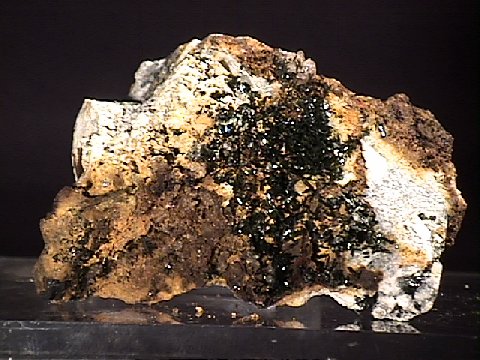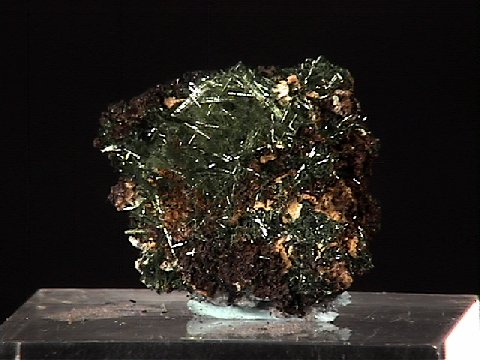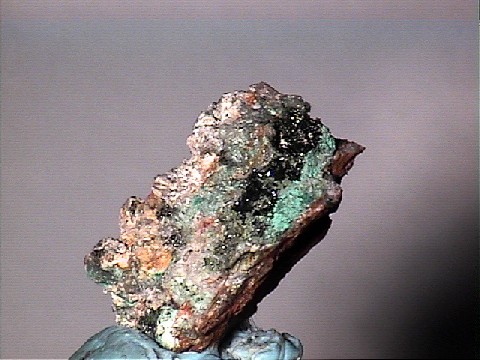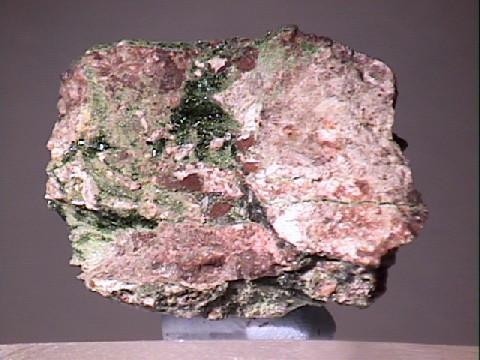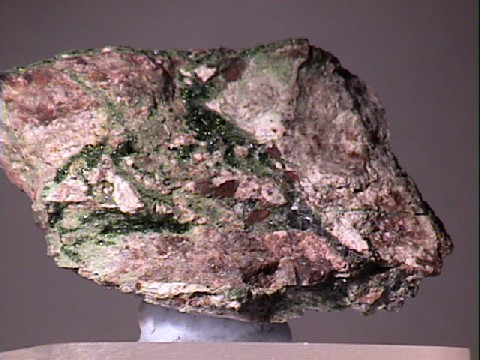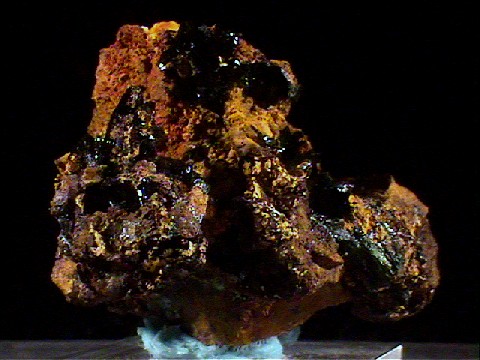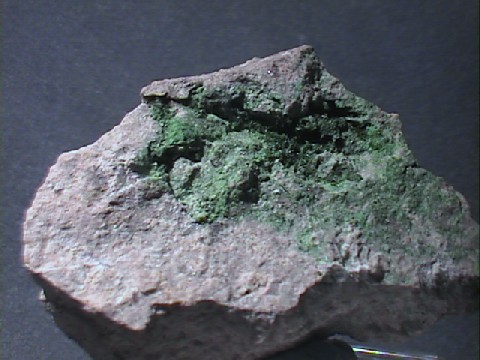 THE MINERAL OLIVENITE
THE MINERAL OLIVENITE
- Chemistry: Cu2AsO4(OH), Copper Arsenate Hydroxide
- Class: Phosphates
- Uses: As mineral specimens and minor ore of copper.
Specimens
It has a rare but notable second habit: it can also form fibrous masses and sheets, and in this form it appears white, even much like a sheet of paper. This variety of olivenite is called leucochalcite. It is similar in form to "mountain leather" (a variety of actinolite).
PHYSICAL CHARACTERISTICS:
- Color is dark olive green.
- Luster is resinous to nearly adamantine.
- Transparency: Specimens are translucent to almost opaque.
- Crystal System is orthorhombic 2/m2/m2/m
- Crystal Habits include crystals that are diamond-shaped, often acicular, prisms that are terminated by a dome with triangular faces. Can form feniform masses similar to wavellite's typical habit. Also as tiny crystalline druzes, fiberous masses, nodules and crusts.
- Cleavage is poor in two directions, but rarely noticed.
- Fracture is conchoidal.
- Hardness is 3
- Specific Gravity is approximately 3.9 - 4.4 (above average to heavy for translucent minerals)
- Streak is olive green.
- Associated Minerals are malachite, libethenite, Clinoclase, limonite, adamite, agardite and other secondary copper ore minerals.
- Other Characteristics: Soluable in hydrochloric acid.
- Notable Occurrences: Cornwall, England; Nevada, USA and Tsumeb, Nambia.
- Best Field Indicators are color, habits, soluability in hydrochloric acid, associations, locallities and density.

